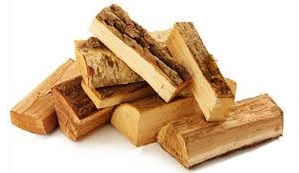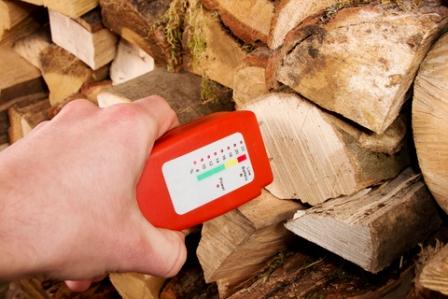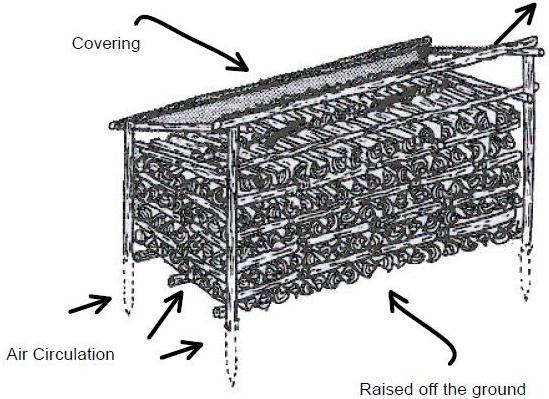Log Splitter Tips How to Dry Firewood
Drying Firewood:
Whether you are splitting your own logs, or buying firewood from your local dealer, it is typically expected that this will be green firewood. Simply put, this means the wood has not yet been seasoned, and there is still too much moisture in it so burning it in this condition is not an ideal option. It is typically expected that you will need to allow your wood to dry for at least one summer season to make it fit for burning in the following winter. So how can you dry your firewood effectively? There some simple steps that can help you get your firewood ready for winter.

Drying firewood effectively usually entails stacking the split wood properly and storing it in a place where it can be fairly well protected from rain and winter snow.
Follow the steps below, and your winter season will be warm and cozy while avoiding the trouble of burning unseasoned firewood. This will allow you to enjoy the warmth of heat from your firewood comforting you all through the cold winter months to come.
How to Dry Firewood For Burning Effectively
When drying firewood for efficient burning, it’s expected that you’ll need to dry your wood until its moisture content is reduced to 20% or less. Wood is basically tiny long tubes of fiber wherein water is locked within its cell walls. A freshly cut log for example will typically contain a moisture content of 30%. Using the example below will allow proper air flow to effectively help you dry your firewood by allowing the water in it to easily evaporate.
Purchase A Firewood Moisture Meter To Check Your Wood
Firewood that has higher moisture level than 20% is difficult to light and may have trouble burning. Additionally, when you burn wood with this level of moisture, it will make even your efficient wood-burning stove have difficulty burning them. The heat that is generated by burning is used instead for drying the excess moisture in the wood and also can lead to producing creosote.
The Ideal Duration of Time to Dry Firewood
The ideal time for drying wood is one summer season as this will generally allow up to six months for the wood to dry. However, there are types of hard wood that can take up to 1 or 2 years to dry properly depending on the species. For this reason, the exact time it will take to dry your wood is still dependable on many factors. During the drying process, it is preferred that the moisture level in your firewood be dropped to around 15 to 20 percent. This is the level of moisture that the Wood Heat Organization recommends as perfect for burning.
Additionally, properly seasoned firewood should not be too dry. The water content in your wood also helps regulate the combustion process along with a few other factors like wood size, configuration, and combustion air supply.
The higher the fuel moisture level in your firewood, the slower it breaks down when burned because of all the heat energy that is soaked up in the effort of boiling the water out of your wood raising the temperature to creat steam.
Can Firewood Be Too Dry?
With dryer firewood, the wood breaks down more quickly when burned causing it to be less effective for long term gain. By breaking down quicker, the vaporization of the volatile components of the wood are used up quicker. The dryer the wood, the more dense the smoke is at a given heat input rate.
Since wood smoke is fuel, it should be burned as completely as possible and this means mixing with an adequate amount of oxygen through combustion air flow. The problem with a load of very dry wood is that it produces far more smoke than the air supplies of many wood stoves are designed to provide. This could back up smoke into your house. And even if you could supply enough air, it would burn like an inferno creating too much heat and burning up too fast. Fires that intense can damage your stove or chimney. Firewood that is too dry can produce a fire that is hard to control.
Splitting, Stacking and Storing Firewood to Dry
To be most effective, it is easier to dry your wood once t has been
split that in its whole log form. Logs containing their protective bark
and in solid form are larger in diameter and more sealed against proper
air flow. This will cause them to dry slowly as the solid log bark prevents
the moisture in the wood from escaping to evaporate. You can only expect
the firewood to dry faster when it is cut and split. When the wood is
already in small pieces, there will be more pieces and edges of the
wood exposed to airflow allowing it to dry faster. The denseness of
Hardwoods that
are more solid like the maple and oak will dry slower compared to
softwoods like
birch and ash.
Stacking your wood in a way to encourage proper ventilation and airflow
will allow it to dry effectively. Elevating it off the ground will enhance
air flow and help avoid insect infestation and prohibit small animals
from making their homes in it. Choose an open place where the sun can
warm and wind can blow through your stacked wood. A home made wood rack
can be easily constructed as shown in the diagram below.
You can also purchase a pre-built one or an assembly kit but make sure it is sturdy enough to support the weight of your logs.
Once seasoned, store your firewood outdoors as conveniently and safely as possible to your wood burning source. Cover it with a tarp to protect it from rain and snow to keep it dry. Storage area should NOT be right up against your house in order to prevent it from staining or rotting your siding.
Don’t spray insecticides on your logs as burning logs that have been sprayed may not be safe for your health.
How to Know When Your Wood is Already Dry
If you're inexperienced it is easy to be unclear whether wood is already dry or not. Utilizing a wood moisture meter is one way to check, but knowing the right indicators should be enough to accurately determine whether stacked firewood is dry and ready for burning. Signs of dry wood include:
- Checks and cracks in the wood that indicates dryness
- Dry wood weight is lighter than wet wood
- Bark begins to separate and fall from the wood
- Color of the wood turns from white to yellow or grey
- Dry wood usually produces a hollow sound when knocked with other wood
- Wet wood usually produces a dull sound
Getting your green firewood ready for burning will take some time so getting started six months or a year before the need to use it will allow sufficient time for it to dry. When you do this, you will have optimal dry wood for burning.

